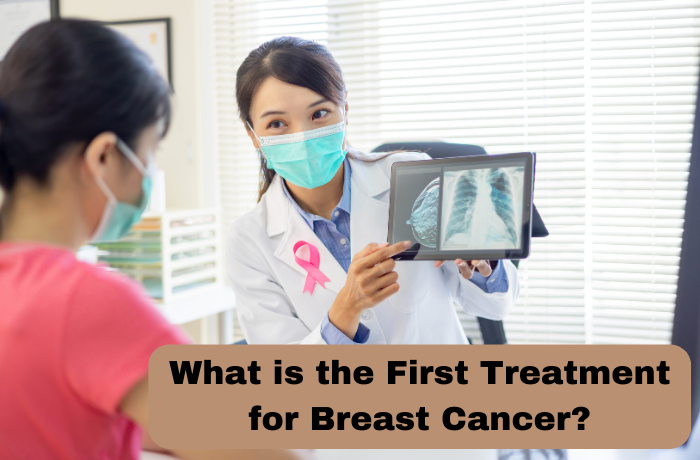Finding out you have breast cancer can be scary, but understanding the first steps in treatment can help you feel more in control. Here is a brief overview of the typical phase of treatment for breast cancer:
Diagnosis and Staging: Understanding Your Cancer
Before treatment begins, doctors will determine the type and stage of your breast cancer. This involves:
- Biopsy: Removing a small sample of tissue to check for cancer cells.
- Imaging Tests: Such as mammograms, MRIs, or CT scans to see the extent of the cancer.
- Blood Tests: To check your overall health and gather more information about the cancer.
Surgery: Removing the Cancer
Lumpectomy (Breast-conserving surgery):
- What it is: This surgery removes the cancerous tumor and a small amount of surrounding tissue.
- Purpose: It allows you to keep most of your breast.
Mastectomy:
- What it is: This surgery removes the entire breast that has cancer.
- When it’s used: It might be needed if the cancer is large or spread out.
Sometimes, lymph nodes under the arm are also removed to check if cancer has spread there. This is called a Sentinel Lymph Node Biopsy or an Axillary Lymph Node Dissection.
Radiation Therapy: Killing Remaining Cancer Cells
Purpose: After surgery, radiation therapy might be used to:
- Kill any leftover cancer cells in the breast area.
- Reduce the chance of cancer coming back in the same spot.
How it works: High-energy rays are aimed at the area where the tumor was to destroy cancer cells.
Medication: Treating Cancer Throughout the Body
Chemotherapy:
- How it works: These are strong drugs taken by mouth or injected into a vein.
- Purpose: They travel through your body to kill cancer cells wherever they are.
- When it’s used: Often given before surgery (neoadjuvant) to shrink the tumor or after surgery (adjuvant) to kill remaining cancer cells.
Hormone Therapy:
- Who it’s for: This is used for cancers that grow in response to hormones.
- Purpose: It stops hormones from helping cancer cells grow.
- How it works: Medications either lower hormone levels or block hormone receptors on cancer cells.
Targeted Therapy:
- How it works: These drugs target specific parts of cancer cells.
- Purpose: They can stop cancer cells from growing or kill them directly.
- Examples: HER2 inhibitors for HER2-positive breast cancers.
Other Treatments
Depending on your specific type of breast cancer, other treatments like immunotherapy (boosting the immune system to fight cancer) or experimental treatments in clinical trials might be options.
Supportive Care: Managing Side Effects
Treatments can have side effects, but supportive care is available to help manage them:
- Pain Management: Medications and techniques to control pain.
- Nutritional Support: Diet and supplements to keep you strong.
- Emotional Support: Counseling and support groups to help with the emotional impact of cancer.
Choosing the Right Specialist
When dealing with breast cancer, having the right specialist is crucial. Dr. Sumit Shah is a well-known Breast Cancer Specialist in Pune who provides top-notch care. He is experienced in all the treatments mentioned and offers personalized care to help you through your journey.
If you’re looking for expert treatment and support, consider consulting Dr. Sumit Shah, a leading Breast Cancer Specialist in Pune.

